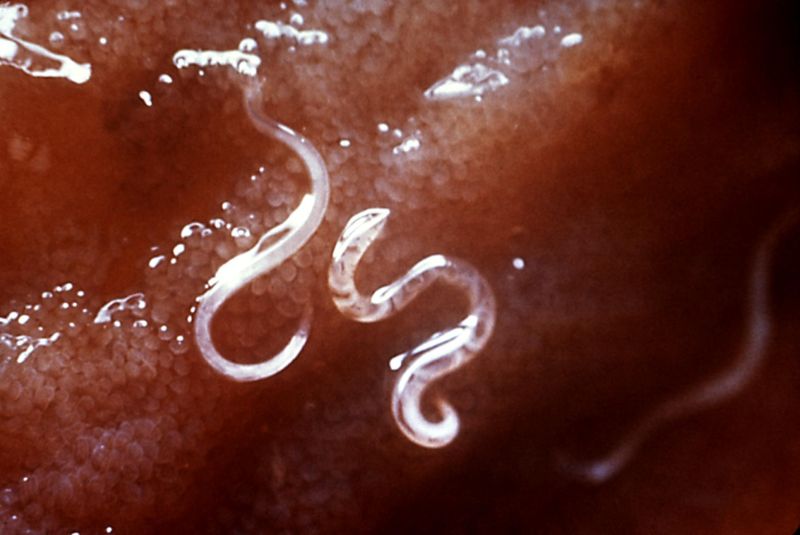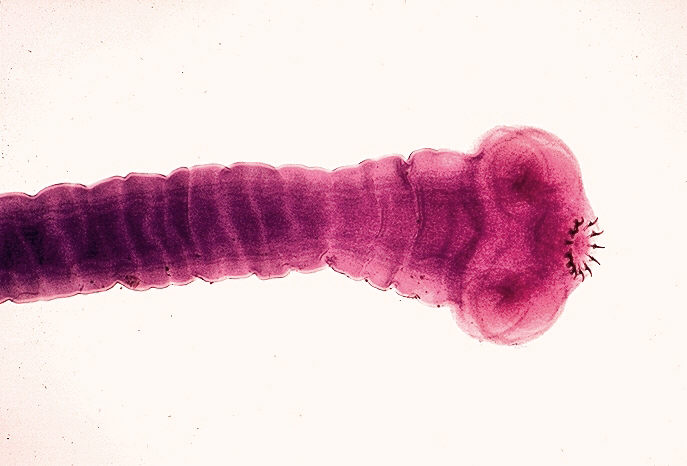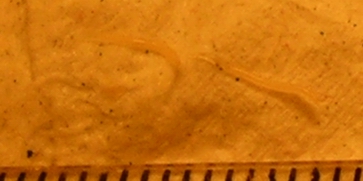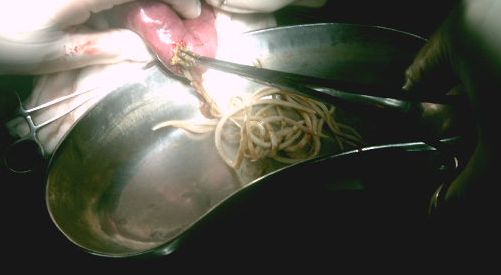Parasitic worm
|
WikiDoc Resources for Parasitic worm |
|
Articles |
|---|
|
Most recent articles on Parasitic worm Most cited articles on Parasitic worm |
|
Media |
|
Powerpoint slides on Parasitic worm |
|
Evidence Based Medicine |
|
Clinical Trials |
|
Ongoing Trials on Parasitic worm at Clinical Trials.gov Trial results on Parasitic worm Clinical Trials on Parasitic worm at Google
|
|
Guidelines / Policies / Govt |
|
US National Guidelines Clearinghouse on Parasitic worm NICE Guidance on Parasitic worm
|
|
Books |
|
News |
|
Commentary |
|
Definitions |
|
Patient Resources / Community |
|
Patient resources on Parasitic worm Discussion groups on Parasitic worm Patient Handouts on Parasitic worm Directions to Hospitals Treating Parasitic worm Risk calculators and risk factors for Parasitic worm
|
|
Healthcare Provider Resources |
|
Causes & Risk Factors for Parasitic worm |
|
Continuing Medical Education (CME) |
|
International |
|
|
|
Business |
|
Experimental / Informatics |
Editor-In-Chief: C. Michael Gibson, M.S., M.D. [1]
Overview
Parasitic worms or helminths are a division of eukaroytic parasites that, unlike external parasites such as lice and fleas, live inside their host.[1] They are worm-like organisms that live and feed off living hosts, receiving nourishment and protection while disrupting their hosts' nutrient absorption, causing weakness and disease. Those that live inside the digestive tract are called intestinal parasites. They can live inside humans as well as other animals.
Helminthology is the study of parasitic worms and their effect on their hosts.
Parasitic worms are categorized into three groups: cestodes, nematodes, and trematodes.
These are the principal morphologic differences of the different families of helminths.
| Cestodes | Trematodes | Nematodes | |
|---|---|---|---|
| Shape | segmented plane | plane no segmented | cylindrical |
| Celoma | NOT | NOT | Present |
| digestive tube | NOT | Ends in cecum | Ends in anus |
| Sex | Hermaphrodites | Hermaphrodites, except Shistosoma | Dioics |
| hook organ component | oral sucker, botridias and doble Rostellar hooks | Lips, teeth, filariform extreme and dentary plates |
Diseases caused in humans by helminth infection include ascariasis, dracunculiasis, elephantiasis, hookworm, lymphatic filariasis, onchocerciasis, schistosomiasis, and trichuriasis.
(Images courtesy of Dr Imtiaz Ahmed Wani)
-
Enterotomy for worm removal
-
Ascaris lumbricoides caused gangrene of ileum (shown worms removed from a child)
Reproduction
Parasitic worms are sequential hermaphrodites and reproduce depending on the species of worm, either with the presence of a male and female worm, joining sperm and eggs, producing fertile eggs, such as hookworms, or by breaking off segments that contain both male and female sex organs that are able to produce fertile eggs without the presence of a male or female. (e.g., tapeworms)
All worm offspring are passed on through poorly-cooked meat, especially pork, wild fish, and beef, contaminated water, feces, mosquitoes, and, in general, areas of poor hygiene and food regulation standards such as parts of Africa, Central and South America, and Asia. However, it is estimated that 40 million Americans are infected with the most common roundworm, the pinworm. Medical experts theorize that widespread intestinal parasite infestation is leading to the rise of colon cancer in the United States.
Worm eggs or larvae or even adults enter the human body through the mouth, anus, nose, or skin, with most species attaching themselves to the intestinal tract. With the presence of digestive enzymes, worm egg shells are dissolved, releasing a brand-new worm; unlike its egg shell, the parasitic worm is protected from the body's powerful digestive enzymes by producing a protective keratin layer.
Immune response
The immune response to worm infection in humans is a Th2 response in the majority of cases. This results in inflammation of the gut, and results in cyst-like structures forming around the egg deposits throughout the body. The host's lymphatic system is also heavily taxed the longer helminths propagate, which excrete toxins after feeding. These toxins are released into the intestines to be absorbed by the host's bloodstream. This phenomena makes the host susceptible to more common diseases such as seasonal viruses and bacterial infection.
References
- ↑ Maizels RM, Yazdanbakhsh M (2003). "Immune regulation by helminth parasites: cellular and molecular mechanisms" (PDF). Nat. Rev. Immunol. 3 (9): 733–44. doi:10.1038/nri1183. PMID 12949497.
External Links
ar:دودة طفيلية
he:הלמינתולוגיה
id:Cacing parasit
th:พยาธิ
uk:Гельмінтологія




